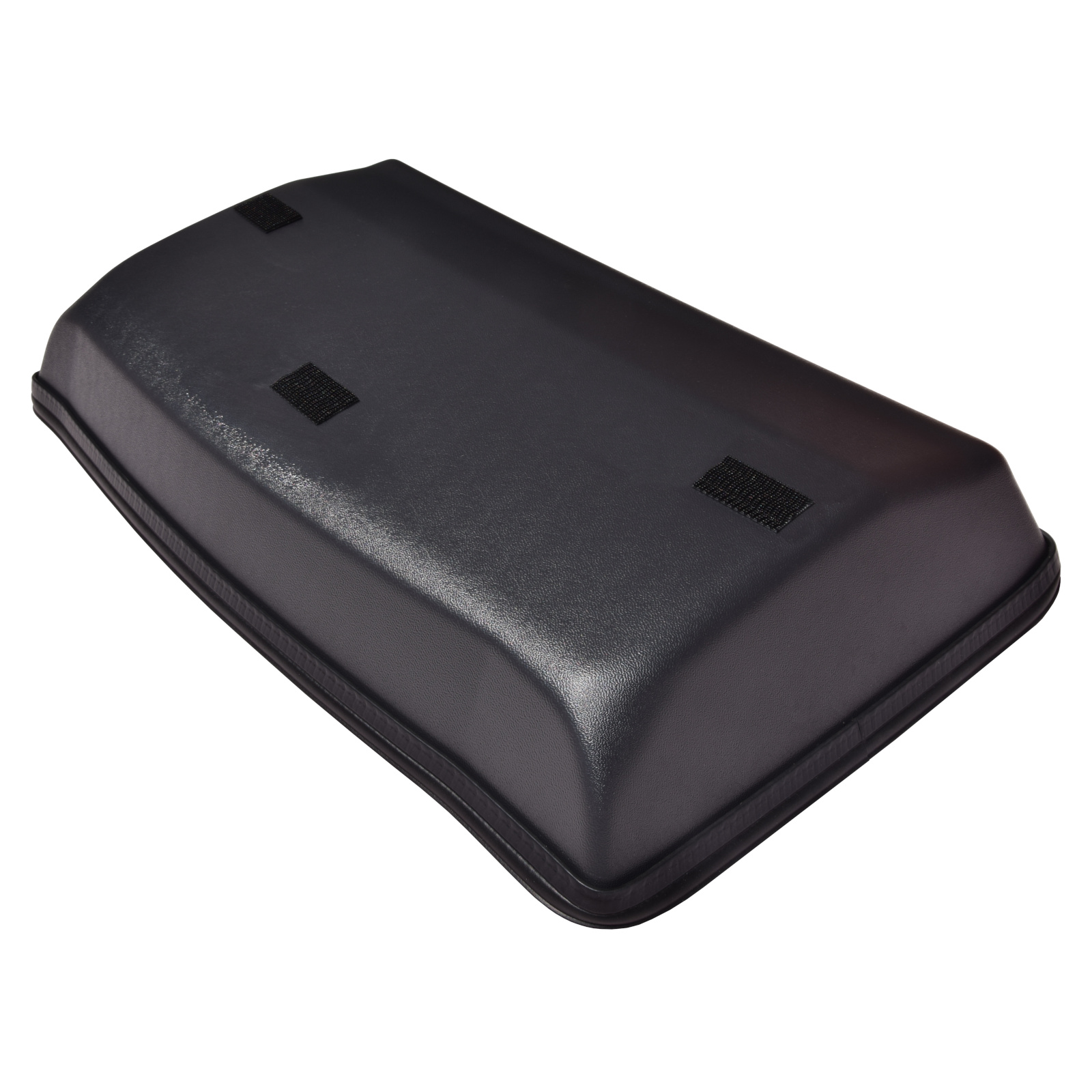Originally posted by kooma
View Post
i3 keskustelua
Collapse
X
-
Se vaan ei taho kovalla tuulella pysyä siinä koukussa ja ainaki mulla on hinkannu kaareen kivat naarmut, wokebyn läppä on tulossa, tehtaalla vaan oli jotain ongelmia tuotannossa ja menny kohta kaks kuukautta eikä läppä ole vielä tullu.
-
Roiskeläpät itte tilasin kiinasta. Makso 25 euroa, vähän joutuu etummaisia leikkeleen et istuu s- malliin kaarien takia.
Leave a comment:
-
Vakiosuojista muuten että jos joku ei ole tajunnut niin sille korkille on semmoinen knääki siinä luukun sisäpuolella joka sopii korkin reunassa olevaan koloon. Saa siis korkin pysymään siinä ettei tarvii maalipintaa vasten roikotella.Originally posted by pyroz View PostFrunkkituotteet on kaiketi toimivia ja käteviä. Tuo latausluukun läppänippeli on ensimmäisten käyttökokemusten mukaan (netistä luettua) aika halvalla tehtyä. Enkä oikein itselle koe mitenkään musthave jutuksi. Toimii ne vakio suojatkin.
Leave a comment:
-
Frunkkituotteet on kaiketi toimivia ja käteviä. Tuo latausluukun läppänippeli on ensimmäisten käyttökokemusten mukaan (netistä luettua) aika halvalla tehtyä. Enkä oikein itselle koe mitenkään musthave jutuksi. Toimii ne vakio suojatkin.Originally posted by fraatti View PostNo, nyt on se itsekin sitten auto ostettu. 94Ah is

Mitäs näihin kannattaa hommata sitten jälkikäteen? Tiivis frunkki taitaa olla ainakin olemassa ja latausluukullekin taisi olla jotain parempaa suojaa olemassa? Passaako iSsään mitkään kuralätkät?
Onkos näissä mitään koodailtavaa juttuja mikä olisi mukava lisä joka autossa?
Tuolla saanee frunkin tiiviiksi.
Tuossa olisi latausluukkuun nivelöidyt suojat. Tekeekö näillä mitään?
https://wokeby.de/produkt/bmw-i3-ladeklappe/
Leave a comment:
-
No, nyt on se itsekin sitten auto ostettu. 94Ah is

Mitäs näihin kannattaa hommata sitten jälkikäteen? Tiivis frunkki taitaa olla ainakin olemassa ja latausluukullekin taisi olla jotain parempaa suojaa olemassa? Passaako iSsään mitkään kuralätkät?
Onkos näissä mitään koodailtavaa juttuja mikä olisi mukava lisä joka autossa?
Tuolla saanee frunkin tiiviiksi.
Tuossa olisi latausluukkuun nivelöidyt suojat. Tekeekö näillä mitään?
Last edited by fraatti; 03-04-2022, 10:34.
Leave a comment:
-
Varmaan joku fancy nimi karvanoppa mallille. Veikkaus.Originally posted by |foder| View PostJoissain lukee komiasti Charged edition. Onko tuo joku varustepaketti vai mitä?
Ainakaan mun silmään ei sen kummallisempia varusteita näy.
Edit. ylempänä tulikin parempi vastaus.
Leave a comment:
-
BMW i3 CHARGED EDITIONOriginally posted by |foder| View PostJoissain lukee komiasti Charged edition. Onko tuo joku varustepaketti vai mitä?
Ainakaan mun silmään ei sen kummallisempia varusteita näy.
Charged edition varustelu sisältää mm.
Monitoimiohjaimet ohjauspyörässä
Vakionopeussäädin
Automaattisesti himmentyvät taustapeili ja kuljettajan ulkopeili
LED-valoelementit
Keskikyynärnoja
Navigointijärjestelmä Business
Säilytystilapaketti
Ilmastointiautomatiikka
BMW 3-vaiheinen AC pikalatauskaapeli
Sadetunnistin
Leave a comment:
-
Joissain lukee komiasti Charged edition. Onko tuo joku varustepaketti vai mitä?
Ainakaan mun silmään ei sen kummallisempia varusteita näy.
Leave a comment:
-
Hieno homma, olisiko kuitenkin 0,20€/min?Originally posted by ///Jone View PostK-lataus 50kw on tosiaan 0,20snt/min. 22kw on 0,20snt/kwh. Käytännössä kun i3s menee laturille 10-15% varauksella, niin loppuhinnaksi jää 0,25..0,27snt/kwh. Tosin kylmään akkuun voi olla sitten 0,30snt/kwh, mutta mutta, summittain se menee aika samaan kuin abc-latauksen kiinteä hinta. Irtikytkentä kannattaa tehdä jossain 85%..90%, sitten latauskäyrä laskee melko jyrkästi. Tämä isoakkuisella 120ah:lla. Joka tapauksessa, hinta on laskenut tuolla minuuttipohjaisella k-latauksella hienosti, varmaankin ABC:n vaikutuksesta, S-marketin pihalta kun saattaa saada auton niin salliessa 150 kWh laturista 0,25€/kWh.
Joka tapauksessa, hinta on laskenut tuolla minuuttipohjaisella k-latauksella hienosti, varmaankin ABC:n vaikutuksesta, S-marketin pihalta kun saattaa saada auton niin salliessa 150 kWh laturista 0,25€/kWh.
Leave a comment:
-
Originally posted by isolohko View PostTämä olisi hyvä juttu, luulin nimittäin, että pikalaturit maksaa k-latauksella n. 90snt per minuutti, 25snt per kWh olisi ollut 22kWh laturilla, joka ei liene pikalaturin tittelin väärtti.
K-lataus 50kw on tosiaan 0,20€/min. 22kw on 0,20€/kwh. Käytännössä kun i3s menee laturille 10-15% varauksella, niin loppuhinnaksi jää 0,25..0,27€/kwh. Tosin kylmään akkuun voi olla sitten 0,30€/kwh, mutta mutta, summittain se menee aika samaan kuin abc-latauksen kiinteä hinta. Irtikytkentä kannattaa tehdä jossain 85%..90%, sitten latauskäyrä laskee melko jyrkästi. Tämä isoakkuisella 120ah:lla.Last edited by ///Jone; 10-02-2022, 18:08. Reason: Sentit euroiksi ettei ihan kakkaa tule foorumille
Leave a comment:
-
Tämä olisi hyvä juttu, luulin nimittäin, että pikalaturit maksaa k-latauksella n. 90snt per minuutti, 25snt per kWh olisi ollut 22kWh laturilla, joka ei liene pikalaturin tittelin väärtti.Originally posted by ///Jone View PostPikalaturilla sähkö 0,25snt/kwh (K-lataus)[/url].
Leave a comment:
-
Pikalaturilla sähkö 0,25snt/kwh (K-lataus ja Abc-lataus). 30min saa sen 100-200km lisää rangea. Kannattaa pohtia rex jättämistä pois, i3s kun ei rex kai kovin. Latureita ihan hyvin, latauskartta.fi näkee. Tuolla taas voi kattoo miltä matka käytännössä näyttää, kun laittaa matkatiedot https://abetterrouteplanner.com/Last edited by ///Jone; 10-02-2022, 13:51.
Leave a comment:
-
Tulee käytyä etelähelsingissä ja siellä maaseudulla niin tämä on se rexin tarve, varoiksi.
Pikalaturin sähkö yhtä kallista kuin tankkaaminenkin. No näin kärjistäen.
Muuten menisi 99% ajoista omasta töpselistä ladaten, nou problemo.
Tänään koeajoin i3 ja onhan se metka laite.
Netissä peloteltu vaikka ja millä eri tarinoilla.
En oikeastaan yhtyisi niihin tarinoihin ja olin positiivisesti yllättynyt. Ainut mikä edelleen rassaa on ulkonäkö. Olisivat tehneet edes jotenkin konservatiivisemman ulkonäön eikä noin pöljää koska-voitiin-tehdä-näin. Olisi voinut myydäkin enemmän.
Tähän mennessä omat kriteerit: pitää olla i3S, rex, penkinlämppärit, h/k hifit. Ei saa olla: nahkapenkkejä (onneksi ei kovin monessa olekaan).
Jo noilla hakutuloksia 0kpl.
Kaikkea lisähilavitkutinta olisi kiva olla mutta sitten ei ainakaan löydy ikinä nettiautosta.
Leave a comment:
-
Sitten se on sitä myöten selvä. Tuon REXin tarpeen kun selvittää niin ILP jää sitten sivuseikaksi jokatapauksessa.Originally posted by |foder| View PostKiitos vastauksista.
Kyllä se rexillinen on pakko olla, varoiksi koska tulisi olemaan mun ainut kulkine.
Yritä ainakin välttää ihan alkupään autot muutamine ongelmineen ja kohta päättyvine akkutakuineen. Ja sitten ei kun nauttimaan halvasta ajosta ja kolmossarjan sisätiloista kompaktissa koossa
Leave a comment:


Leave a comment: